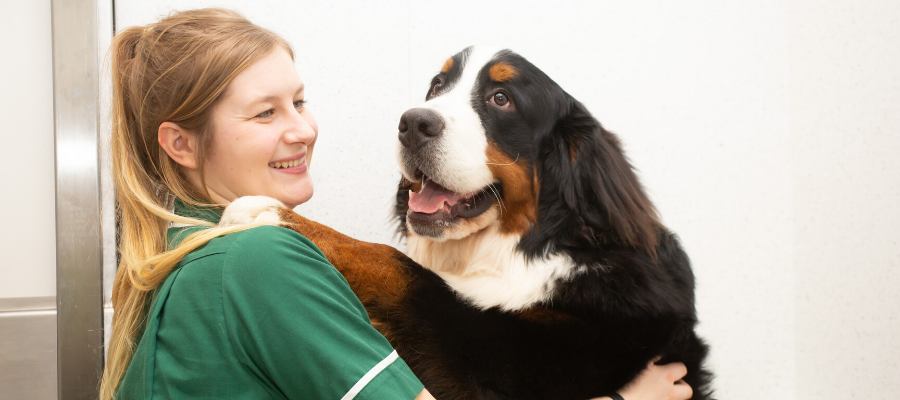
If your dog is young, fit and healthy and you have decided not to breed from them in the future, we fully recommend neutering, which has a number of advantages.
What are the benefits of neutering my dog?
- Preventing unplanned, unwanted and costly offspring.
- Eliminating certain cancers and diseases.
- Reducing aggression, straying, spraying and other anti-social behaviour
What is involved in the procedure?
In female dogs we offer two methods of spaying- the conventional spay, which removes the ovaries and uterus, or the laparoscopic (keyhole) spay, where only the ovaries are removed. It has been shown that removal of the uterus is unnecessary when ovaries are removed and does not result in a pyometra (infection of the womb) where no hormones are present. After a conventional spay, your dog will need to be kept quiet and calm, with restricted exercise for 10 days. A keyhole spay is less invasive and the recovery time is quicker, with dogs returning to normal exercise around 5-7 days later.
In male dogs we remove the testicles surgically; this is a simpler procedure than spaying a bitch. Your dog will need to return for a check up and suture removal 10-14 days after their operation. Your dog will need to be kept quiet and a calm the day after procedure, with exercise restricted for 5 days post-operatively.
Procedures are performed under general anaesthetic and patients are monitored carefully by vets and nurses throughout the procedure and recovery.
How long does it take?
Surgery is performed in the morning and most patients recover so quickly that they only stay with us for a few hours and are ready to go home after a light lunch.
When can I have my dog neutered?
We usually recommend spaying bitches after their first season, however we will spay from 6 months old (before the first season), after a check over with a vet.
Male dogs can be castrated from 6 months of age.
Please speak to your vet if you need advice about when is best to have your dog neutered- ideal age of neutering can vary between breeds.
Laparoscopic Spay
What is laparoscopy?
Laparascopy or ‘keyhole surgery’ has become much more popular within veterinary medicine in recent years purely because of the advantages to the patient. Instead of performing surgery in the conventional way through an 8-12cm incision, the procedure is performed through two very small incisions, 1cm in diameter.
What are the advantages of a laparoscopic spay?
The procedure is less painful than traditional surgery. Dogs will recover more quickly and return to exercise faster. Wound management is a lot easier; the two very small incisions heal up a lot faster. This is particularly advantageous in young, bouncy patients.
Is my dog suitable for a laparoscopic spay?
Bitches must be at least 6 months of age and over 5 kilograms.
Is there limited availability and how far in advance do I need to book?
Our vets Philip Snyman and Ian Killian perform the laparoscopic surgeries and they operate on specific days of the week. Is it best to call 1-2 weeks in advance to book your pet in.
Are there any greater risks with a laparoscopic spay compared to a conventional spay?
The risks are no different between a conventional spay and a laparoscopic spay. In very rare cases the laparoscopic spay might need to be converted to a conventional spay, for example if there is a large amount of bleeding which cannot be stopped.
Call us on 01435 864422 to book an appointment today.

